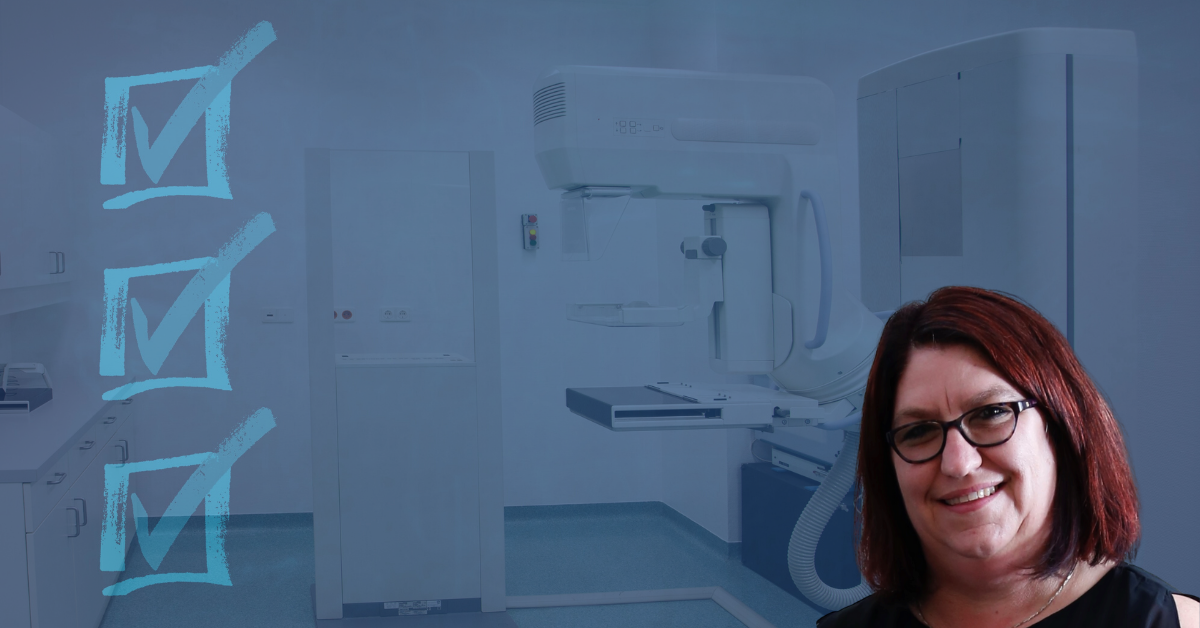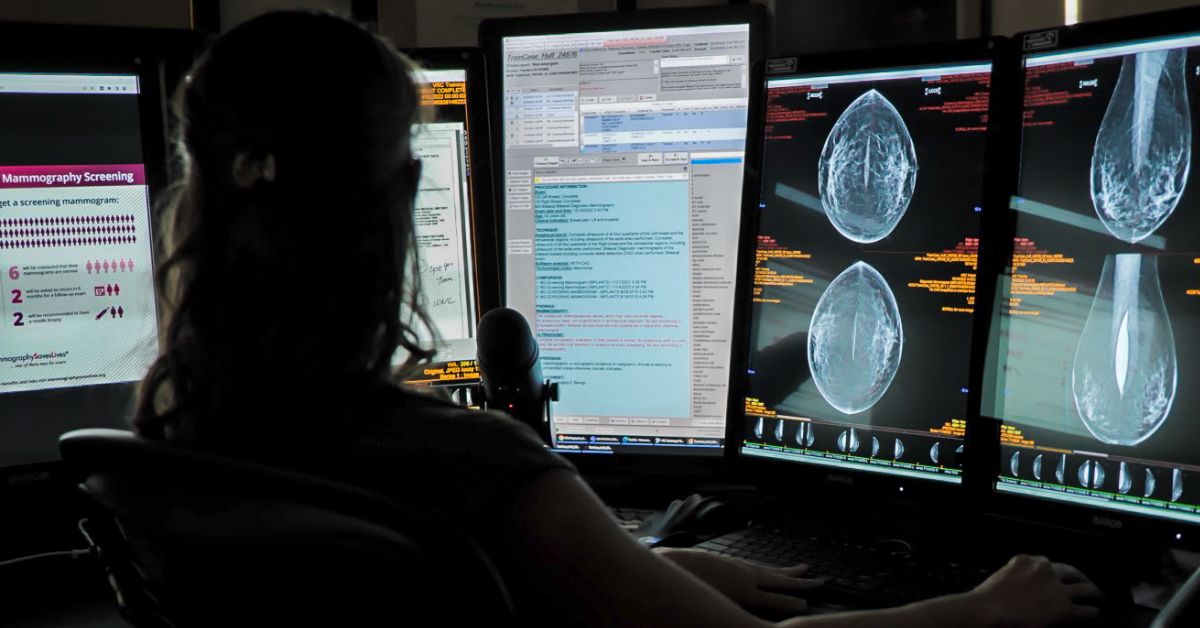New Horizons in Breast Imaging: 3D Tomosynthesis Mammography
Conventional 2D mammography images the whole breast in one exposure. Two images of each breast at orthogonal angles to one another are then acquired...

Remote radiologist jobs with flexible schedules, equitable pay, and the most advanced reading platform. Discover teleradiology at vRad.

Radiologist well-being matters. Explore how vRad takes action to prevent burnout with expert-led, confidential support through our partnership with VITAL WorkLife. Helping radiologists thrive.

Visit the vRad Blog for radiologist experiences at vRad, career resources, and more.

vRad provides radiology residents and fellows free radiology education resources for ABR boards, noon lectures, and CME.

Teleradiology services leader since 2001. See how vRad AI is helping deliver faster, higher-quality care for 50,000+ critical patients each year.

Subspecialist care for the women in your community. 48-hour screenings. 1-hour diagnostics. Comprehensive compliance and inspection support.

vRad’s stroke protocol auto-assigns stroke cases to the top of all available radiologists’ worklists, with requirements to be read next.

vRad’s unique teleradiology workflow for trauma studies delivers consistently fast turnaround times—even during periods of high volume.

vRad’s Operations Center is the central hub that ensures imaging studies and communications are handled efficiently and swiftly.

vRad is delivering faster radiology turnaround times for 40,000+ critical patients annually, using four unique strategies, including AI.
.jpg?width=1024&height=576&name=vRad-High-Quality-Patient-Care-1024x576%20(1).jpg)
vRad is developing and using AI to improve radiology quality assurance and reduce medical malpractice risk.

Now you can power your practice with the same fully integrated technology and support ecosystem we use. The vRad Platform.

Since developing and launching our first model in 2015, vRad has been at the forefront of AI in radiology.

Since 2010, vRad Radiology Education has provided high-quality radiology CME. Open to all radiologists, these 15-minute online modules are a convenient way to stay up to date on practical radiology topics.

Join vRad’s annual spring CME conference featuring top speakers and practical radiology topics.

vRad provides radiology residents and fellows free radiology education resources for ABR boards, noon lectures, and CME.

Academically oriented radiologists love practicing at vRad too. Check out the research published by vRad radiologists and team members.

Learn how vRad revolutionized radiology and has been at the forefront of innovation since 2001.

%20(2).jpg?width=1008&height=755&name=Copy%20of%20Mega%20Nav%20Images%202025%20(1008%20x%20755%20px)%20(2).jpg)

Visit the vRad blog for radiologist experiences at vRad, career resources, and more.


Explore our practice’s reading platform, breast imaging program, AI, and more. Plus, hear from vRad radiologists about what it’s like to practice at vRad.

Ready to be part of something meaningful? Explore team member careers at vRad.
4 min read
 Tammy Noraas
:
July 12, 2021
Tammy Noraas
:
July 12, 2021

Whoever said the only things certain in life are death and taxes never faced an MQSA inspection. Federally mandated in the early ’90s and delegated to the states ever since, the process can seem like a frenetic exercise in reprimand avoidance. However, with a little rethinking and some focused preparation, you can turn the stressful day into an enjoyable experience.
In fact, watch out. You might even come to see your pre-inspection checklisting as a rewarding labor of love. After all, the beneficiaries of your dutiful i-dotting and t-crossing are deserving mammography patients.
It is with them in mind that I offer some principles and pointers I’ve come back to time and again over the 30-plus years I’ve worked in mammography technology, operations and administration. This includes the last seven years helping vRad’s telemammography clients prepare for their inspections.
1. Get organized. Sounds simple enough, but I know from personal experience how easy it can be to slip and start approaching project organization passively: “I’ll just tidy things up quickly when I need to.” Instead, if you actively take steps to organize on regular bases—daily, weekly, monthly—you won’t have to scramble just ahead of the state inspector’s arrival. And when inspectors have orderly files to go through, their job is much easier. They have less stress to transmit to you.
This is never more important than when an inspector drops in unannounced. “Gotcha” visits are rare occasions, but they aren’t unheard of. Best to be constantly prepared.
2. Maintain a binder for each radiologist who reads for you. Within each binder, keep folders for the inspection sections your inspectors will look at. For example, for each reading radiologist, you’ll need to have records on CMEs, read volumes, ABR certification and initial experience.
The latter may surprise some who are new to state MQSA inspections. Why would a radiologist who’s been reading mammography for 20 or 30 years need to show their original training in the discipline? Because training denotes specialized expertise. There’s no substitute for experience, and nobody would argue against that. But in the eyes of regulators, neither is there any substitute for initial training.
Meanwhile, the only thing that’s going to change on a yearly basis in the radiologist section is going to be CMEs, volumes and state licenses. Each time you have new info for those items, be sure to update your radiologist files. The rest of the paperwork that you have—or should have—should always be the same. Take a breather on that stuff.
3. Treat your radiologists’ workstations like high-risk “patients” all year round. To be in compliance with the law, you need to be conducting QC tests on reading displays and connected equipment weekly, monthly and quarterly. In addition, your physicist must do his or her thing with this equipment once a year.
It’s the depth of carefulness you need to sustain with details like these that can make inspection day such a dreaded time. State mammography inspectors are incredibly picky. One year I got written up for failing to connect some dots on the processor manual. Everything else was perfect, but they wouldn’t let that tiny infraction go by un-scolded. I share this memory so you’ll know how closely I can relate to what you may go through with inspections.
4. Whether they’re on staff or under contract, think of your physicist as your equipment’s primary care provider. Remember that, much like you do for your radiologists, you need to be up-to-date with your physicist’s licensing, CME and work record.
5. Consult with your Lead Interpreting Physician quarterly so they can regularly review your QA program. Along with keeping your QA records up to date, your LIP influences your inspection performance just by being there. The state wants to know that a radiologist is engaged in quality control. Many of our telemammography clients don’t have access to a LIP locally so we provide the service through one of our fellowship-trained breast imaging radiologists. I mention this so you’re aware that you have options for LIP engagement beyond your local area.
6. Keep good records of positive exams for patient tracking. If you don't know the outcomes of your positive exams, they’re not in compliance with MQSA. You have to show that every positive patient was followed through to the final outcome, whether this was a negative next exam, negative biopsy, or a positve outcome from surgery. The state inspector may also scrutinize the tracking system itself, making sure it’s a current version of capable software.
7. If you have physicist turnover within an inspection year, you’re going to need complete records for both (or all) of them. This means more paperwork for you, but once again, if you organize your physicist section whenever changes are made, you won’t sweat it out at inspection time.
8. Remember that you probably know more than they think you know. A positive thing about a state inspection is that it only happens once a year. You will have had plenty of time to marinate in whatever learnings you gleaned from the previous inspection. Do your homework, but trust your gut—and get a good night’s sleep on inspection eve.
Keep in mind that the inspector is there for you, your patients and your entire operation. What they’re really interested in is helping you assure your patients that they’re getting high-quality care.
9. Know that I’m here for you, too. If you’re already a vRad mammography client, you know that I’m a part of your team. Helping you organize, prepare for and pass your next state inspection is a key part of my job—one I enjoy immensely. If you’re not with vRad for breast imaging services, contact an account manager to find out if we’re a good fit for you.
10. Make sure the inspector leaves without needing anything from you post- inspection day. If you’ve taken most of the steps suggested above, this will be enough said about that.
Good luck—and may your next state inspection day be a stress-free success every step of the way.
For more information visit vRad’s Breast Imaging and Telemammography Services.
This post was oringally published on Radiology Buisness.

Conventional 2D mammography images the whole breast in one exposure. Two images of each breast at orthogonal angles to one another are then acquired...

Originally published by Michael Walter on Radiology Business In 2020, a growing health system in the Northeast asked vRad for assistance. Like many...

On May 9, 2023, the U.S. Preventive Services Task Force (USPSTF) issued draft recommendations that average-risk women get screened for breast cancer...
vRad (Virtual Radiologic) is a national radiology practice combining clinical excellence with cutting-edge technology development. Each year, we bring exceptional radiology care to millions of patients and empower healthcare providers with technology-driven solutions.
Non-Clinical Inquiries (Total Free):
800.737.0610
Outside U.S.:
011.1.952.595.1111
3600 Minnesota Drive, Suite 800
Edina, MN 55435